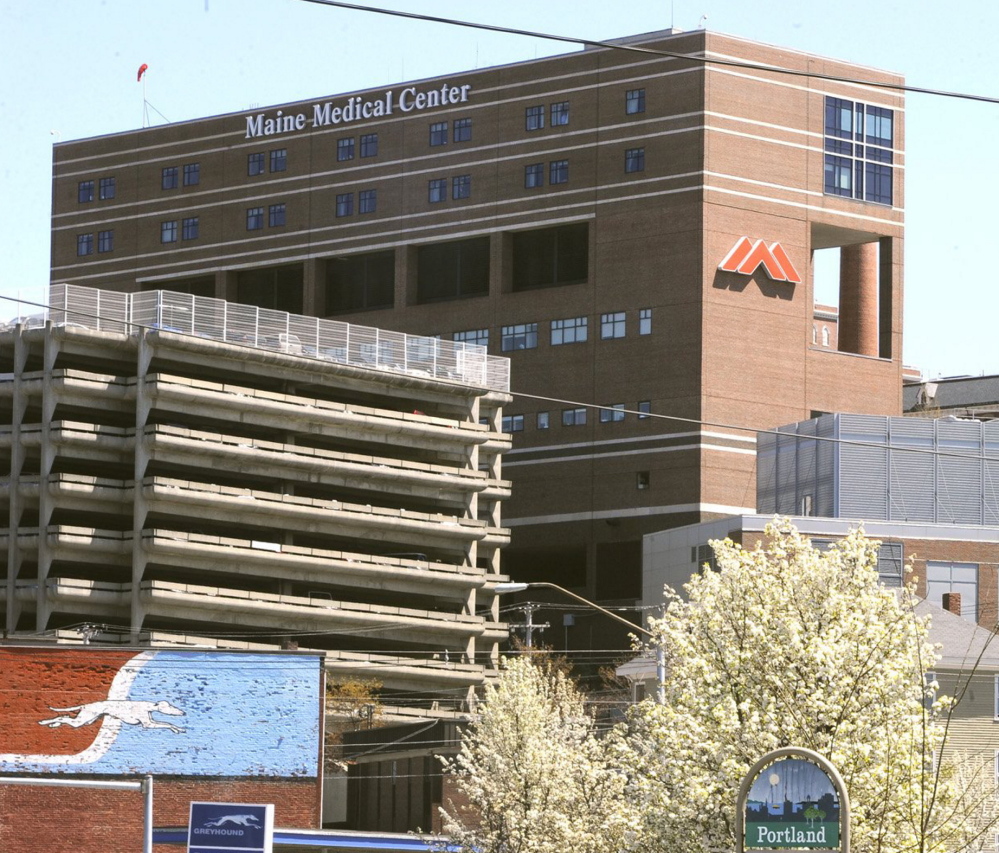Two Maine hospitals are facing federal funding penalties because their Medicare patients had some of the nation’s highest rates of infections and complications in the last three years.
Maine Medical Center in Portland and St. Mary’s Regional Medical Center in Lewiston are among 175 hospitals across the country that are most likely to be penalized because their preliminary scores are at least 9 on a scale of 1 to 10, according to an analysis by Kaiser Health News.
Maine Med’s score is 10 and St. Mary’s score is 9.025 under the new Hospital-Acquired Condition Reduction Program, the latest effort by the Centers for Medicare & Medicaid Services to reduce costs and improve care.
Other Maine hospitals have scores nearly as high and are at risk of similar financial penalties.
Relatively few infections and complications can cause high scores, which surprised some hospital administrators.
“We knew what our data was. We didn’t know we’d have some of the highest scores,” said Betsey Shew, St. Mary’s director of performance improvement, in a telephone interview Monday. “These are all things we’re always working on.”
Medicare has identified 761 hospitals in the United States that had high rates of urinary and bloodstream infections among Medicare patients in intensive care units, and high rates of surgery-related complications among all Medicare patients. Sanctioned hospitals could lose as much as $330 million nationwide.
Based on preliminary scores, hospitals scoring 7 or above would be penalized, though that could change by the time final scores are released in September, Kaiser reported. Hospitals that get penalized will lose 1 percent of Medicare reimbursements for a year starting in October.
Maine hospitals scoring higher than 7 are MaineGeneral Medical Center in Augusta (8.375), Inland Hospital in Waterville (8), Mercy Hospital in Portland (8) and Eastern Maine Medical Center in Bangor (7.35).
Maine Med has already taken steps to address its high score, according to a written statement issued Monday on behalf of Peter Bates, senior vice president of academic and medical affairs and chief medical officer at Maine’s largest hospital.
“We have been aware for some time of the measures that have an adverse impact and have already put work and programs in place that ensure that by the time the CMS data reflect 2014 and 2015, our scores will look substantially better than they do today,” the statement said.
“Any reduction in reimbursement – particularly in today’s health care environment – is certainly not something we take lightly,” the statement said. “We take a careful and measured approach to building our budget and we will maintain our aim on continuous improvement to avoid repeating this penalty in future years.”
The Portland hospital has instituted various training programs to reduce infections, including some recommended by a team from Johns Hopkins University that visited the hospital this spring to review clinical practices and patients’ safety, according to the statement.
The hospital’s statement questioned the methodology of the Medicare scoring, noting that the hospital treats some of the most complex and diverse patients in northern New England. It also alluded to the hospital’s role as a clinical outpost of Tufts University School of Medicine, pointing out that about 54 percent of teaching hospitals are slated to lose Medicare reimbursements because of high scores.
Maine Med didn’t respond to a request for an interview or information beyond the written statement, such as how much its penalty might be or how many infections and complications the hospital has had in the last three years.
The Hospital-Acquired Condition Reduction Program is the third part of Medicare’s effort to reduce costs and improve care, following recent programs that penalized hospitals for higher readmission rates and lower patient satisfaction and clinical care results.
Certain hospitals are exempt from penalties for infection and complication rates, including rehabilitation, children’s, psychiatric, cancer and critical-access hospitals, as well as those with too few cases to be evaluated, according to Kaiser Health News.
St. Mary’s rates of infections and complications show that relatively few problems can lead to a high score.
The Lewiston hospital logged three urinary catheter infections and three blood catheter infections among Medicare intensive care patients in all of 2012 and 2013, with no infections in 2011 and none so far this year, said Shew, the hospital’s director of performance improvement.
The hospital also logged seven treatment-related complications among all Medicare patients – such as collapsed lungs, blood clots, broken hips and wound splits – from July 2011 through June 2013, Shew said. A staff review of each case determined that none of the complications was preventable and all had short-term positive outcomes.
None of the patients in any of the infection or complication cases died from the treatment, she said.
“A majority of the complications occurred in complex surgical situations,” Shew said, noting the hospital’s policy to take on complicated cases rather than refer them to other hospitals.
Shew was unable to provide numbers for Medicare patients served by the hospital.
Shew said St. Mary’s is taking the Medicare assessment seriously. It has a policy to remove catheters as soon as possible, within 24 to 48 hours after surgery, and it uses antimicrobial covers on central lines to reduce bloodstream infections.
“In general, it’s a valid assessment,” Shew said. “There’s an element of subjectivity, but in general it’s a methodology we know.”
Shew said the hospital is confident that it can address deficiencies, lower future scores and recover whatever financial penalty is imposed, as it has with past Medicare penalties.
What’s more concerning, she said, is the damage that the high score may have on St. Mary’s longstanding reputation as a safe institution.
Send questions/comments to the editors.



